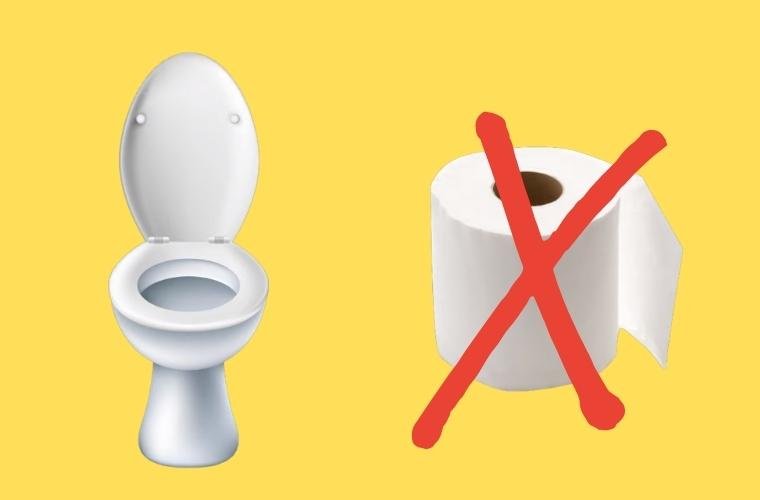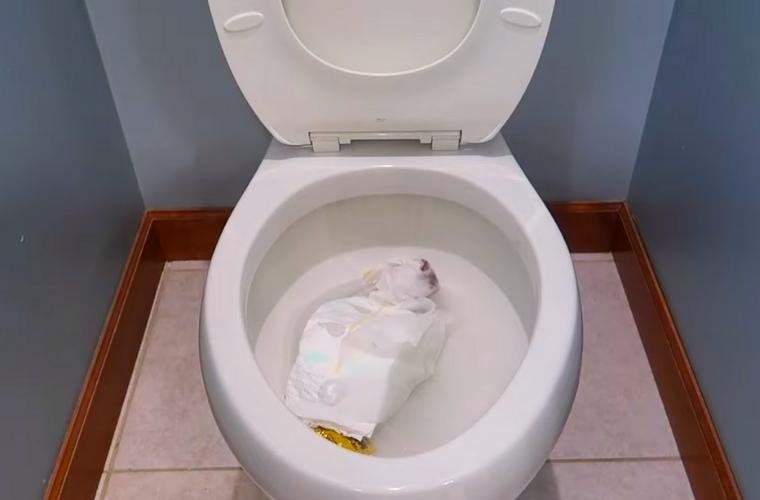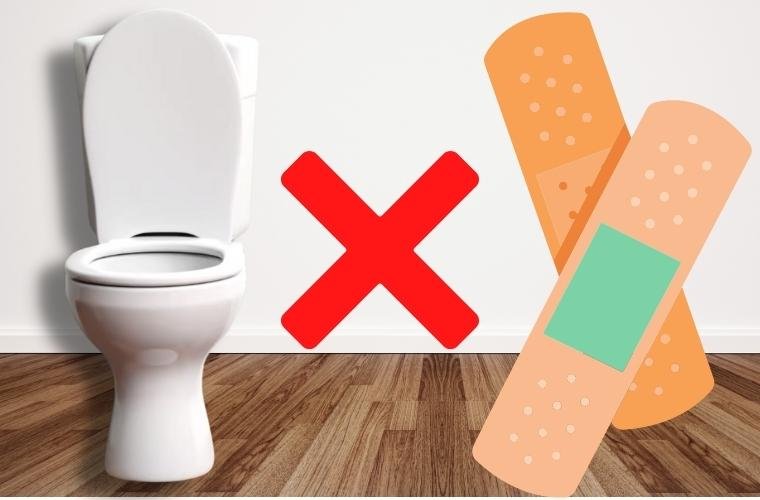In every modern household, the toilet is one of the most important fixtures. We use it every single day without giving much thought to what happens after we flush. Toilets are designed to handle only two things — human waste and toilet paper. But in reality, many people treat the toilet like a trash can, sending all kinds of items swirling down the drain.
Unfortunately, flushing the wrong items can lead to serious plumbing problems, blocked sewer lines, and costly repairs. Some items may even harm the environment, polluting waterways and damaging septic systems.
If you’ve ever experienced a clogged toilet, you know how inconvenient and unpleasant it can be. So before you press that flush handle again, let’s look at the 17 common items you should never flush down the toilet — and why they cause so much trouble.
1. Any Type of Wipes (Including “Flushable” Ones)
Wet wipes — whether makeup wipes, baby wipes, or cleaning wipes — are among the top causes of toilet clogs worldwide.
Although some packaging claims they’re “flushable,” these wipes do not dissolve in water like toilet paper. Instead, they stay intact, tangle with hair and other debris, and form stubborn blockages known as “fatbergs.”
New parents often flush baby wipes after diaper changes, assuming it’s harmless. But over time, wipes can block the drainpipe, damage your plumbing, and even cause municipal sewer backups.
Better option: Dispose of used wipes in a trash bin lined with a small plastic bag.
2. Paper Towels and Napkins
Paper towels and napkins may look similar to toilet paper, but they are much thicker and more absorbent. That strength is what makes them useful for cleaning spills — and also why they don’t break down easily in water.

Flushing paper towels can quickly clog the toilet trap or pipes, especially if you use several at once.
Tip: If you run out of toilet paper, use tissues or wipes only if you plan to throw them in the trash — not the toilet.
3. Feminine Hygiene Products (Pads and Tampons)
Feminine hygiene products are designed to absorb and expand, not dissolve. That makes them one of the worst offenders for plumbing blockages.
When flushed, tampons and sanitary pads absorb water, swell up, and lodge themselves inside the drainpipe. They can also stick to rough spots in older plumbing systems, forming tough clogs that require a plumber to remove.
Disposal tip: Wrap them in toilet tissue or their original packaging and place them in a bathroom trash bin.
4. Diapers
Flushing a diaper might seem like a quick fix, but diapers are designed to hold large amounts of liquid — not release it.

Disposable diapers are made from thick plastic and super-absorbent polymers that don’t disintegrate in water. Once flushed, they immediately block the toilet’s trapway, and no amount of plunging can move them.
Even smaller “swim diapers” can cause the same issue. Always wrap them and dispose of them in the trash.
5. Condoms
Condoms are made from latex or polyurethane, which means they don’t break down in water. When flushed, they can get tangled with hair and wipes, creating a slimy blockage deep in the pipe.
Beyond plumbing damage, condoms that reach water systems can harm marine life.
Right way: Wrap them in tissue or paper and throw them in the bin.
6. Excess Toilet Paper
Yes, even toilet paper — when used excessively — can cause trouble. While it’s made to break down in water, using large wads at once can block older toilets or low-flow models.
If you often need to flush multiple times to clear tissue, it’s a sign you may be using too much or your toilet has weak flushing power.
Solution: Use moderate amounts or switch to a high-performance no-clog toilet like:
-
American Standard Vormax Plus
-
TOTO Drake Two-Piece Toilet
-
Proflo ADA Toilet
7. Dental Floss
Dental floss is another sneaky culprit. It may look harmless, but it’s made of nylon or Teflon fibers, both of which are non-biodegradable.
When flushed, floss acts like fishing line — wrapping around other debris such as hair, wipes, and tissue, creating dense knots that trap waste. Over time, this web can form a major blockage inside your pipes.
8. Hair
Hair behaves just like dental floss — it tangles easily and catches everything in its path. When you clean your hairbrush or shave, tossing the hair into the toilet may seem convenient, but it builds up into a rope-like mass that slows water flow.
Better habit: Throw hair in the trash or collect it in a tissue and dispose of it properly.
9. Cotton Balls, Pads, and Swabs
Cotton products are absorbent and fibrous. When you flush cotton balls, rounds, or Q-tips, they don’t dissolve; instead, they absorb water and expand, eventually creating a thick blockage in the pipes.
Even biodegradable versions take far longer to break down than toilet paper.
Smart tip: Keep a small wastebasket near your vanity or toilet to collect these daily items.
10. Cigarette Butts
Flushing cigarette butts doesn’t just cause clogs — it also introduces toxic chemicals into your plumbing system. Filters contain cellulose acetate, a type of plastic that doesn’t decompose quickly.
The chemicals from cigarettes, including nicotine, can pollute water supplies and harm aquatic life.
Dispose of cigarette butts in a sealed container or ashtray, not the toilet.
11. Cat Litter and Pet Waste
Even if your cat litter says “flushable,” it’s still risky. Litter is designed to clump together when wet — the exact opposite of what you want in a plumbing system.
Flushing cat waste can also introduce dangerous bacteria like Toxoplasma gondii into waterways, which is harmful to humans and marine animals.
Always bag pet waste and litter, and dispose of them with your household trash.
12. Expired or Unused Medication
Flushing medication might seem like a safe way to dispose of it, but doing so contaminates your water system. Drugs don’t dissolve completely, and wastewater treatment plants can’t filter them out entirely.
This means chemicals from medications can end up in rivers, lakes, and even drinking water.
Safe disposal: Take unused medicines to a local pharmacy, hospital, or community drug take-back program.
13. Food Scraps
Many people think food is biodegradable and harmless to flush. But food waste takes time to decompose, and larger chunks (like rice, noodles, or vegetable peels) can expand in water and clog pipes.
Greasy or oily food residue also sticks to the inside of pipes, causing buildup and narrowing the passageway.
Better solution: Compost your food waste or throw it in a sealed trash bag.
14. Bleach and Harsh Chemicals
Bleach may seem like a good cleaner, but it’s actually too harsh for your plumbing. It can corrode rubber seals and metal parts inside the toilet tank and damage your pipes.
Additionally, mixing bleach with other cleaning agents can produce dangerous fumes.
For cleaning your toilet safely, use mild cleaners or natural solutions like baking soda and vinegar instead.
15. Band-Aids and Adhesive Pads
Band-Aids may look small, but they’re made of plastic and adhesive materials that don’t dissolve in water. Over time, they stick to pipe walls, catching other waste and forming blockages.

Always throw used bandages in a bathroom trash bin.
16. Chewing Gum
Gum is sticky and rubbery — two qualities that make it a nightmare for plumbing. It can adhere to pipes, trap other debris, and harden over time, forming an almost immovable plug.
Spit gum into tissue and throw it in the garbage instead.
17. Cooking Oil, Grease, and Fat
Oil might seem harmless because it’s a liquid when warm, but once it cools down, it solidifies inside your pipes. Over time, these fatty deposits mix with wipes and other debris to form thick, glue-like clogs.
Grease buildup is one of the main causes of sewer blockages in homes and cities.
Safe practice: Pour used oil into a sealed container, let it harden, and dispose of it with solid waste.
What Happens When You Flush the Wrong Items?
Flushing the wrong items may seem minor at first, but it can lead to several major problems:
-
Clogged toilet or drainpipes: Even one non-flushable item can block the trap or S-bend.
-
Sewer backups: Wastewater may overflow into your home, creating an expensive mess.
-
Plumbing damage: Over time, corrosive or non-dissolving items can weaken your system.
-
Environmental pollution: Non-biodegradable items harm fish, birds, and marine life.
Fixing a clogged toilet might cost $100 to $300 for a plumber’s visit — or more if your main line is affected. Prevention is far cheaper and easier.
DIY: Simple Home Remedy for a Mild Toilet Clog
If your toilet is draining slowly or partially clogged, you can try a natural cleaning solution before calling a plumber.
-
Pour one mug of baking soda into the toilet bowl.
-
Add two cups of vinegar slowly — it will fizz.
-
Let the mixture sit for 30–40 minutes.
-
Flush with hot (not boiling) water.
This eco-friendly method helps loosen minor blockages and deodorizes your toilet naturally.
If the water level doesn’t go down after two or three attempts, it’s time to call a professional plumber.
How to Prevent Toilet Clogs Permanently
-
Keep a small trash can beside the toilet for wipes, cotton, and hygiene items.
-
Teach children and guests what not to flush.
-
Inspect your plumbing regularly if you live in an older home.
-
Upgrade to a powerful no-clog toilet that’s designed for modern efficiency.
Recommended No-Clog Toilets
If your toilet clogs often despite proper use, it might be time for an upgrade. Here are a few top-rated options known for their strong flush performance and water efficiency:
-
American Standard Vormax Plus – Dual-flush system with powerful self-cleaning action.
-
TOTO Drake Two-Piece Toilet – Reliable, high-powered flush and easy maintenance.
-
Proflo ADA Toilet – ADA-compliant height and efficient design for reduced clogs.
These models are great long-term investments for families who want less maintenance and better hygiene.
Conclusion
Your toilet isn’t a trash can — it’s a delicate part of your home’s plumbing system designed for specific use. By avoiding these 17 non-flushable items, you can save yourself from costly repairs, messy backups, and environmental harm.
Always remember the golden rule:
Only flush human waste and toilet paper — nothing else.
A little care and awareness go a long way in keeping your bathroom clean, efficient, and odor-free. Treat your toilet well, and it will serve you reliably for years to come.
Some of the best no-clog toilets you can buy:
Hi, this is Robert Crossan, the owner of this website, has 17 years of experience in the installation, maintenance, and repair of toilets and plumbing systems. After completing the Level 2 Basic Plumbing course in 2005, I started working in both domestic and commercial buildings as a professional plumber. So I can figure out the core difference between different toilet models and brands. It also helped me monitor their work performance and setbacks.